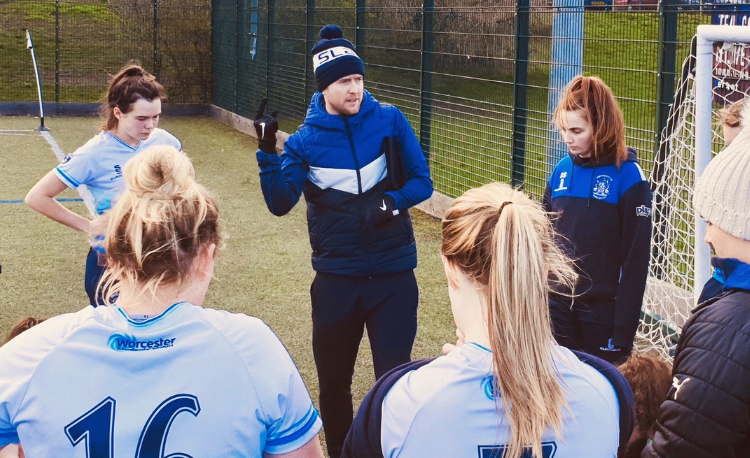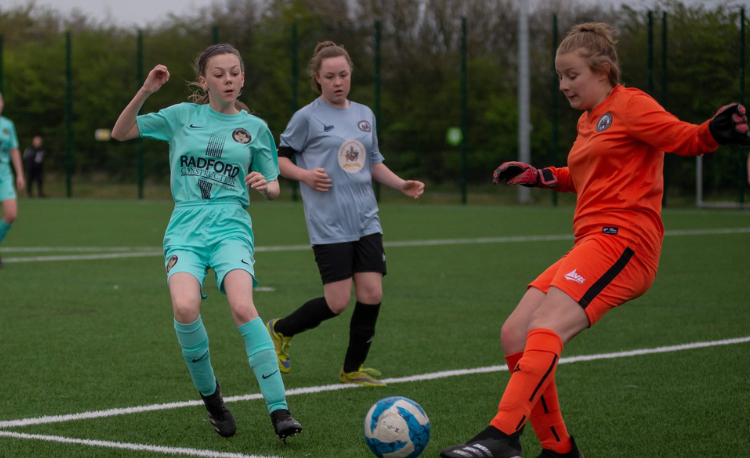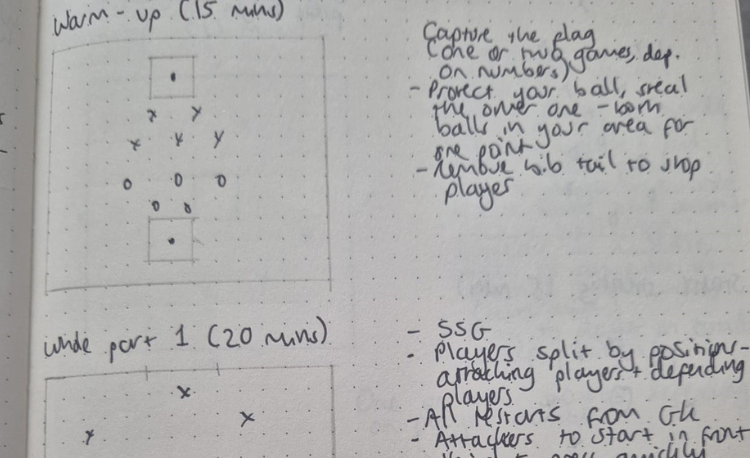The different ways to choose a captain
There are many different ways of choosing an on-field leader: you might let the players vote, you may rotate the role or perhaps have a whole group in charge.
While a coach manages a team, a captain leads it.
The captain holds the unique position of bridging the gap between players and management, acting as a role model and reinforcing team culture.
There are numerous ways to approach how you choose a captain for your team, each suited to different team structures, goals, and player personalities.
The age and stage of your team is also a factor – the older players get, the more responsibility, typically, comes with being captain.
Here’s our handy guide to how you can go about deciding how to run your team captaincy.
The coach-chosen captain
What is it?
This is where the coach picks one of their players to be captain, long-term – likely for a full season.
This allows you to pick a player that you think exemplifies your team’s values, and displays the qualities you appreciate in a captain.
These attributes could include leadership, good behaviour, communication skills or work ethic, for example.
You can also make a judgement based on who you think has the respect of the other players. Who do they look up to and listen to?
Who is it better for?
- Older age group teams
At the older youth-age groups, and in adult soccer, teams often benefit from more structured leadership. The responsibilities of a captain are also greater the older they get; having one person take on these responsibilities on can help with consistency. - Teams that really need leadership
Some teams may exist with very few on-field leaders, or even none. Picking one player to be captain can allow you to work with them and develop their leadership skills.
The player-chosen captain
What is it?
This is where the players vote for their preferred captain.
It can be done based on what they know of their team-mates; or, players can be encouraged to put themselves forward, perhaps with an idea of what they would bring to the table as captain, to be voted for.
Picking a captain this way allows players to feel as if they are part of the decision-making processes around the team, fostering a sense of collective responsibility.
For the chosen captain, it can also be helpful to know that their team-mates value them, and see them in a leadership role.
Who is it better for?
- Older age group teams
Choosing a captain this way with younger teams runs the risk of favouritism, or players choosing their preferred captain based on friendships and team dynamics. Doing it with older, more mature teams may mean players are making decisions from the point of view of making the best choice for the team.
Leadership group
What is it?
Instead of a single captain, a leadership group consists of multiple players – perhaps three or four – who collectively assume leadership responsibilities.
These players could be given the role of captain, vice-captain and second vice-captain, for example. This is common in elite professional teams in Europe.
Or, there could be no hierarchy, and the official matchday captaincy is rotated around the group.
Who is it better for?
- Larger squads
If you have a bigger squad, having a single captain might not address all of the needs of the team. A leadership group allows for representation across different areas, personalities, or skillsets. - Teams with complex dynamics
You may have a team made up of different friendship groups, for example. Forming a leadership group with members of these different groups can make sure different groups have a voice and support bringing them together. - Teams with lots of leaders
If several players demonstrate leadership qualities, this structure allows each of them to have a role and make use of these qualities. - New teams
If you are working with a relatively new team, having a few leaders can support the building of team cohesion. You can be strategic about how you choose them, too – perhaps you want a leader in each of the units: Defence, attack and midfield, for example.

Rotating captain
What is it?
In a rotating captain system, the captaincy shifts among team members, typically on a game-by-game basis.
This approach allows a number of players to get a chance to experience leading the team.
Who is it better for?
- Younger teams
As the responsibilities of a captain are less at the younger age groups, it’s a good chance to change the captaincy each game. Many players will be really excited for this and relish the chance to wear the armband. - Teams with challenges
For teams with behaviour or work-ethic issues, for example, the captaincy can be used as an incentive. You could choose the captaincy each week depending on how a player behaves or the work they put in at training. - Teams lacking leadership
You may want to develop leadership across your group of players – rotating the captain, and giving each captain specific tasks or ideas when they are in the role, can support this.
Set-time captain
What is it?
In a set-time captain model, the captain is chosen for a fixed period – a month, or six matches, for example.
This can provide a structure and will allow the captain to work on their leadership skills, with the possibility for future change if necessary.
Who is it better for?
- New teams
If you are working with a new team, and just getting to know your players, a set-time system can give you a chance to get to know your players more and try players out in a leadership role.
Related Files
5 tips for approaching the team captaincy
Ultimately, the way you choose to approach your captaincy comes down to the strategy of your club or team, and what you think your players need. You can use the ideas in this article, or even mix a few together – the set-time captain can be player-chosen, for example. However you choose to run the captaincy, there are a few things to consider...
- Make sure all players know the roles and responsibilities of the captain: All players should know that there are certain things you have to do as captain. These things will be specific to your team and environment. All players understanding the responsibilities of the role will help both those who take on the captaincy, and their team-mates, who will be better prepared to interact with the captain and support them as needed.
- Communicate the reasons behind the choice of captain: Whatever approach to captaincy you take, let your team know why an individual has been chosen. With the rotating captain for example, you may say that a certain player is wearing the armband this week because they put in a brilliant effort at training. This allows the team to celebrate the player and gives their team-mates an incentive to work hard.
- Make sure players know the captaincy isn’t the be-all and end-all: This is really important, particularly at the younger age groups. Players need to know that being captain doesn’t make you any better, or more important than other members of the team – it is simply a different role.
- Understand some players don’t want to be captain: While some players aspire to be captain, other players can’t think of anything worse. Make sure you chat to players to understand where their interest lies.
- Get a few armbands: There’s nothing worse than the coach telling a player they are captain for the day, only to then realise they have forgotten the armband! How will everyone, particularly the referee, know? Get a few armbands and stash them in your different bags, so you don’t run that risk.
Newsletter Sign Up
Coaches Testimonials

Gerald Kearney, Downtown Las Vegas Soccer Club

Paul Butler, Florida, USA

Rick Shields, Springboro, USA

Tony Green, Pierrefonds Titans, Quebec, Canada
Subscribe Today
Discover the simple way to become a more effective, more successful soccer coach
In a recent survey 89% of subscribers said Soccer Coach Weekly makes them more confident, 91% said Soccer Coach Weekly makes them a more effective coach and 93% said Soccer Coach Weekly makes them more inspired.
*includes 3 coaching manuals
Get Weekly Inspiration
All the latest techniques and approaches
Soccer Coach Weekly offers proven and easy to use soccer drills, coaching sessions, practice plans, small-sided games, warm-ups, training tips and advice.
We've been at the cutting edge of soccer coaching since we launched in 2007, creating resources for the grassroots youth coach, following best practice from around the world and insights from the professional game.







